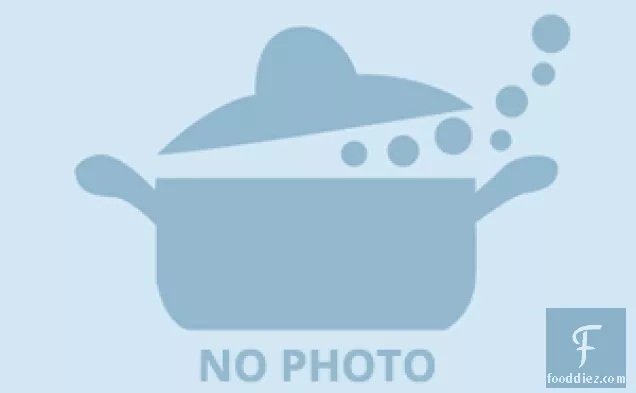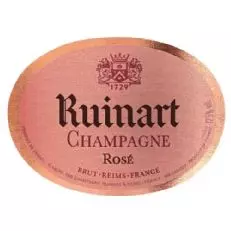Goat Cheese-Pesto Crostini

The recipe Goat Cheese-Pesto Crostini could satisfy your Mediterranean craving in about 25 minutes. This recipe serves 24. One portion of this dish contains roughly 4g of protein, 10g of fat, and a total of 132 calories. Not a lot of people really liked this hor d'oeuvre. This recipe from Taste of Home requires baby spinach, olive oil, bread baguette, and herbed goat cheese. Users who liked this recipe also liked Goat Cheese Crostini with Pesto and Roasted Red Peppers, Crostini with Goat Cheese, Pesto, Roasted Tomatoes, and a Balsamic Drizzle, and Goat Cheese Crostini.
Instructions
1
In a small bowl, combine the oil, pesto and Parmesan cheese.
Ingredients you will need![Parmesan]() Parmesan
Parmesan![Pesto]() Pesto
Pesto![Cooking Oil]() Cooking Oil
Cooking Oil
Equipment you will use![Bowl]() Bowl
Bowl
2
Place bread slices on an ungreased baking sheet; brush with pesto mixture. Broil 3-4 in. from the heat for 3-4 minutes or until edges are lightly browned.
Ingredients you will need![Bread]() Bread
Bread![Pesto]() Pesto
Pesto
Equipment you will use![Baking Sheet]() Baking Sheet
Baking Sheet
3
Meanwhile, in a large skillet, cook bacon over medium heat until crisp.
Ingredients you will need![Bacon]() Bacon
Bacon
Equipment you will use![Frying Pan]() Frying Pan
Frying Pan
Ingredients
Recommended wine: Sparkling Wine, Chianti, Verdicchio, Sparkling Rose, Trebbiano
Crostini works really well with Sparkling Wine, Chianti, and Verdicchio. If you're serving a selection of appetizers, you can't go wrong with these. Both are very food friendly and complement a variety of flavors. The Ruinart Brut rosé ( half-bottle) with a 5 out of 5 star rating seems like a good match. It costs about 56 dollars per bottle.

Ruinart Brut Rose ( half-bottle)
*There was a packaging change on this wine. The label pictured may not be the label received.*The wine is a brilliant orange-yellow rose petal colour with a very fine, profuse and sustained mousse. The nose is characterized by small red berries, mainly currant. On the palate the wine is vigorous and well balanced. A fine, fresh, fruity wine with well-integrated tannins and a hint of spice on the lengthy finish.Ruinart Rosé is produced from a blend of 55% Pinot Noir and 45% Chardonnay from the best of recent vintages. All of the fruit is from premiers crus vineyards. Grapes from the estate vineyards in Sillery and Brimont (ancestral home of the Ruinart family) are joined by carefully selected grapes from other premiers crus vineyards in the Côte de Blancs and the Montagne de Reims. The grapes for Ruinart are selected basket by basket at the source, and only the finest premiers crus are used.DifficultyMedium
Ready In25 m.
Servings24
Health Score0
Magazine

Your Inner Chef with Taylor Swift's Top 3 Recipes from Her Beloved NYC Hangout

20 Mouthwatering Recipes You Need to Try Today!

Master the Art of Making Perfect Pancakes with This Foolproof Recipe

The Science Behind Red Wine: Its Surprising Health Benefits and Potential Risks

12 Wine Cocktails for a Sophisticated Twist

Sip, Swirl, and Celebrate: Toasting to National Wine Day on May 25th

National Drink Wine Day on February 18

Celebrating Souffle Day with Delectable Delights

Indulge in the Delightful Flavor of Oyster Soup on Its Special Day!

Celebrating World Nutella Day

American Classics You Can Easily Make at Home

How to Bake Muffins

Olives - the tiny briny fruit as the star ingredient

Comfort Food at Its Finest: The Best Beef Stew Recipes

Cooking with Beer: 5 Best Party Recipes

How to cook Beef and Steak

What to Cook This Week?

The Ultimate Guide to Making Your Own Homemade Fruit Roll-Ups

From Ancient Grains to Modern Delicacies: Unraveling the Fascinating History of Food

The Future of Vegan Food: Exploring Global Culinary Trends in 2023

Your Inner Chef with Taylor Swift's Top 3 Recipes from Her Beloved NYC Hangout

The Science Behind Red Wine: Its Surprising Health Benefits and Potential Risks

Indulge in the Delightful Flavor of Oyster Soup on Its Special Day!

Celebrating World Nutella Day

Celebrate National Pizza Day on February 9th with Mouthwatering Slices and Fun Facts

Stay Cozy and Warm with These Delicious Winter Recipes

Exploring the Fascinating World of Blue Food

Indiana's Exciting Addition to the Summer Food Program for School Children

10 Must-Try Airport and Train Station Restaurants












